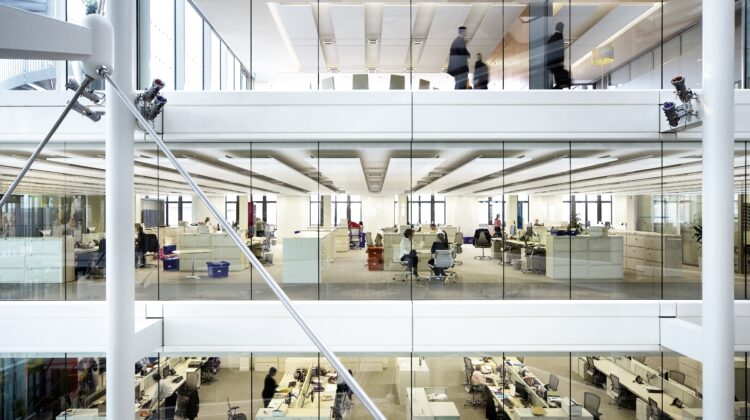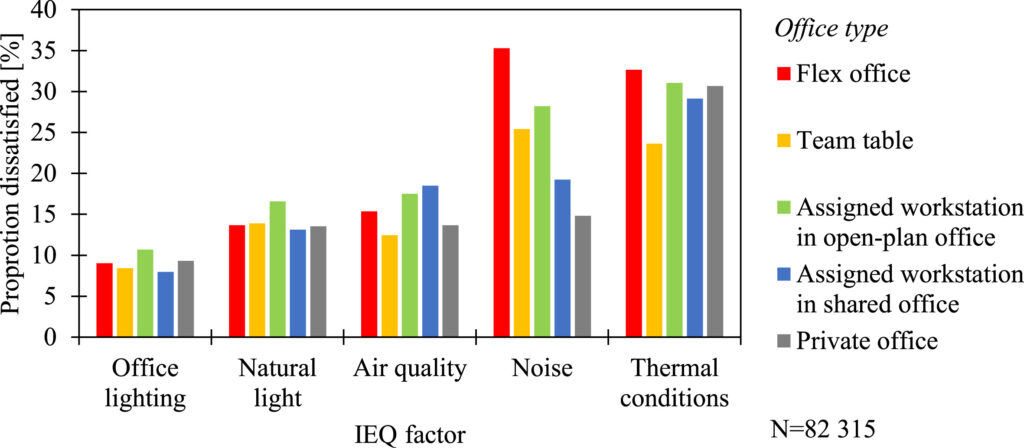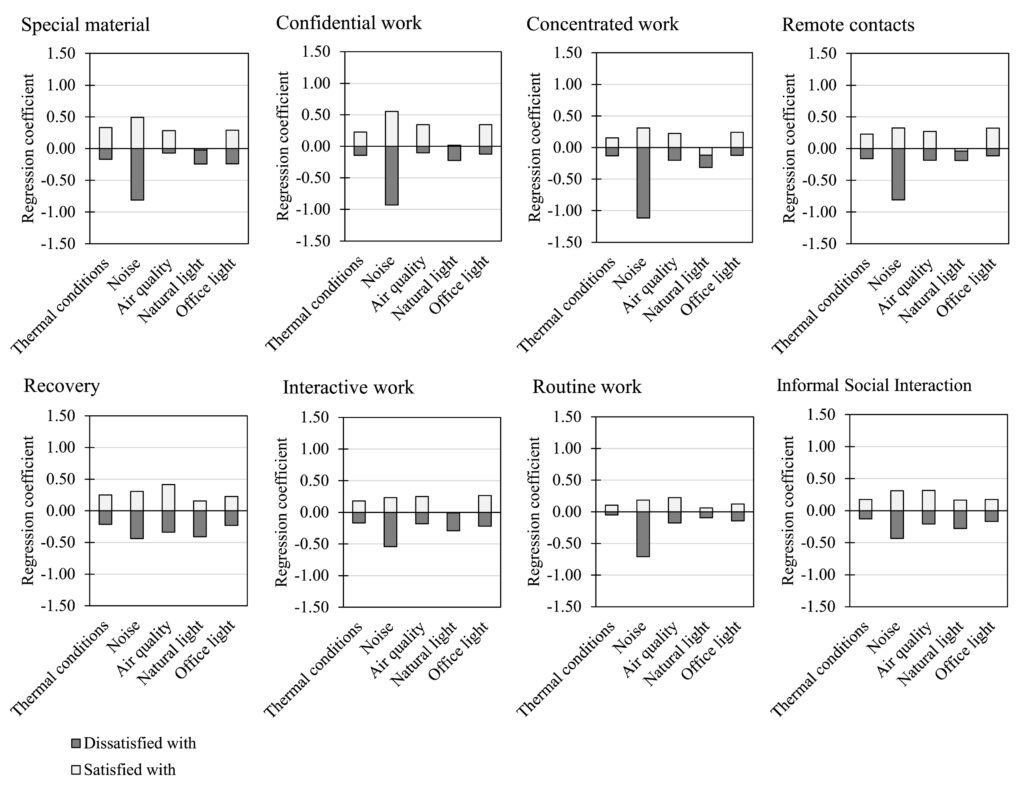
Many research studies investigate satisfaction with indoor environmental quality in offices. In their study, Jenni Raduni and Valtteri Hongisto from Turku University examined the influence of office types and satisfaction with indoor environmental quality factors on different activities’ perceived fit. The study was based on a large global dataset consisting of more than 82,000 respondents across six continents. Satisfaction with IEQ factors emerged as a crucial aspect of fit for purpose office. It highlighted the need for prioritizing environmental quality, particularly sound control, in office design and management practices.
Activity-based design offices have been around for at least a decade, gaining even more attention in the hybrid work model. Employees coming to the office have a purpose, and the office is meant to support both general purpose and specific activities. The office activities undergo scrutiny analysis. The goal is to provide the appropriate functional layout and design that will facilitate and sometimes initiate specific activities.
In their research, Jenni Raduni and Valtteri Hongisto from Turku University of Applied Science examined the relation of office type, indoor quality satisfaction and perceived fit of different activities. They used a large dataset collected from 82,315 office employees worldwide, working at least 50% of their time in the office,. This extensive dataset was obtained from the Leesman Standard Survey, a widely recognized and standardized measure of workplace experience. The analysis was based on the need-supply fit theory. That approach suggests activity types generate needs, the environment provides the resources, and perceived fit reflects how well the environment supports these activities.
A diverse mix of office tasks
The perceived fit was the assessment of how well workplaces supported various office tasks. These were categorized into eight activity types: the concentrated work, interactive work, confidential work ( confidential discussions), individual routine work, informal social interactions, remote contacts , special material (spreading out paper or material, using specialist material) and recovery.
Environment: office type and indoor quality
Five of the most often used work settings were selected: flex office ( a flexible/non allocated workstation), team table, assigned workstation in open plan office, assigned workstation in a shared office and private office . Indoor Environmental Quality (IEQ) encompassed assessing the importance, followed by satisfaction with office lighting, natural light, air quality, and noise.
Findings
The analysis revealed a significant portion of respondents expressed dissatisfaction with thermal conditions (30.7%) and noise (27.9%). However, only dissatisfaction with noise was strongly related to the perceived fit of office activities. Satisfaction with IEQ factors emerged as a stronger predictor of perceived fit compared to office types. IEQ factors alone explained 16–24% of the perceived fit across different activity types.

Specifically, private offices were deemed most suitable, particularly for concentrated and confidential work, as well as remote contacts. For concentrated work, environmental factors played a crucial role, explaining 23% of the perceived fit. Dissatisfaction with noise alone explained 17% of the perceived fit for concentrated work.
Additionally, flex offices were found to diminish the perceived fit compared to private offices, particularly for concentrated work. Informal social interaction was found to be the least influenced by environmental factors. Only 13% of perceived fit of informal social interaction was explained by these factors.

Conclusion
The study underscores the importance of considering the match between office activities and environmental conditions. Satisfaction with IEQ factors, particularly acoustic environment, emerged as important determinant of fit-for purpose offices. It highlightes the need for prioritizing environmental quality in office design and management practices.
Source: “Perceived fit of different office activities – The contribution of office type and indoor environment”, J.Radun, V. Hongisto, 2023, Journal of Environmental Psychology

